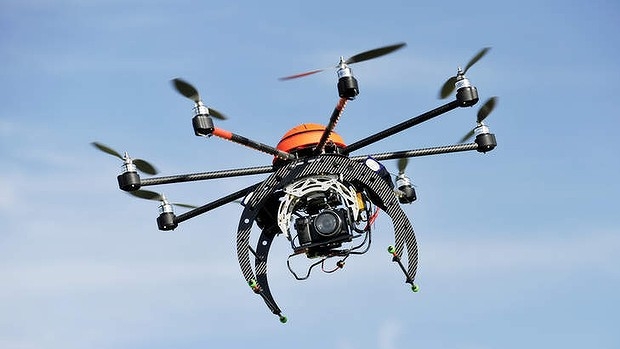Medical Reform? ALPA Opposes It
By CalPilots |
ALPA Opposes GA Medical-Reform Effort
EAA leadership was fuming at AirVenture on Saturday morning, as they dealt with a last-minute, unexpected letter from the Air Line Pilots Association sent to members of Congress, opposing the Pilots’ Bill of Rights 2 now under consideration — with a vote in the Senate expected as soon as Tuesday. ALPA cited concerns over safety if the bill, which would allow GA pilots to self-certify under most circumstances, were to pass. “This is an out-and-out attack to derail the bill,” EAA Chairman Jack Pelton said at an impromptu news conference at Oshkosh on Saturday morning. “We think it’s unconscionable, and unfair to the GA public.” Pelton and the EAA staffers quickly worked to rally the troops at AirVenture to call their senators on Monday to let them know the bill is important to them.
California Bill Would Prevent Most UAV Flights Over Private Property
By CalPilots |
 AUVSI Says It Would Make Virtually All Flights Illegal
AUVSI Says It Would Make Virtually All Flights Illegal
A bill that is working its way through the California Legislature would create a no-fly zone for UAVs from the ground up to 350 feet over any private property in the state.
The bill, introduced by District 19 Senator Hannah-Beth Jackson, “would extend liability for wrongful occupation of real property and damages to a person who operates an unmanned aircraft or unmanned aircraft system less than 350 feet above ground level within the airspace overlaying the real property, without the express permission of the person or entity with the legal authority to grant access or without legal authority.”
AOPA Pressing Medical Reform
By CalPilots |
AOPA is hoping for some movement on the relaxation of third class aviation medical requirements “in the next few weeks,” according to a report recorded for AOPA Live. Jim Coon, AOPA’s senior vice president of government affairs, told the program that medical reform remains AOPA’s top priority. “This is an issue we are working on every day,” said Coon. “We know how important it is to members and to the future of general aviation, so we will keep pursuing reform through every means available to us.” Coon said there now bills before both the Senate and House to introduce the measure and it’s also possible it could be added to another bill or as part of the coming FAA reauthorization. FAA funding runs out Sept. 30.
Discontinuation of the WAC
By CalPilots |

The following link will lead you to the Federal Register announcement regarding discontinuation of the WAC series, dated 6/23/2015: https://www.federalregister.gov/articles/2015/06/23/2015-15271/policy-for-discontinuance-of-world-aeronautical-chart-series
Southern California Airspace Improvements
By CalPilots |

FAA Releases Draft Environmental Assessment for Southern California Airspace Improvements
The U.S. Department of Transportation/Federal Aviation Administration (FAA) is seeking public comment on the Draft Environmental Assessment (Draft EA) for the Southern California Metroplex project, a comprehensive proposal to improve the flow of air traffic into and out of Southern California by making the airspace safer and more efficient.
The project proposes to replace dozens of existing conventional air traffic procedures with new satellite-based procedures, which are a key component of the FAA’s Next Generation Air Transportation System (NextGen). The Metroplex proposal encompasses most of Southern California and includes six major airports.
Drone activity noted on sectional charts
By CalPilots |
 WHAT. NO PILOT IN THE COCKPIT? Drone activity noted on sectional charts with a small airplane symbol with the letters “UA”.
WHAT. NO PILOT IN THE COCKPIT? Drone activity noted on sectional charts with a small airplane symbol with the letters “UA”.
“Manned and unmanned aircraft not authorized in the same traffic pattern. Arriving manned aircraft may follow unmanned aircraft on final.”
AREAS WITH A PREPONDERANCE of unmanned aircraft systems (UAS) activity are typically noted on sectional charts with a small airplane symbol, similar to that used for glider operating areas but with the letters “UA” instead of “G.” Expect UAS activity in nearby restricted or other special-use airspace and military installations.
New Sleep Apnea Rules March 2
By CalPilots |
The FAA will impose new guidance on obstructive sleep apnea (OSA) to air medical examiners on March 2. The new rules are much different than the controversial 2013 edict that came from then-Chief Flight Surgeon Fred Tilton, which automatically grounded pilots with body mass index of 40 or more. But it does require AMEs to put more emphasis on the disorder during the medical and sets out the potentially costly steps that will follow if they suspect it. Overweight pilots will almost certainly be targeted under the new orders but they can keep flying until there is a definitive diagnosis and they agree to undergo treatment. Throughout the fact sheet issued on Friday, the FAA maintained that it’s not changing any rules. “The FAA is not changing its medical standards related to OSA,” it said. “The agency is revising the screening approach to help AMEs find undiagnosed and untreated OSA.”
Pilot's Bill of Rights 2 – Do your part
By CalPilots |
The bill below was introduced to both the house and Senate. Its called the Pilot’s Bill of Rights 2 and would allow pilots flying recreationally in a wide range of aircraft to no longer obtain a third class medical certificate. The new bill would allow private pilots to make noncommercial VFR and IFR flights in aircraft…
Pilot’s Bill of Rights 2 – Do your part
By CalPilots |
The bill below was introduced to both the house and Senate. Its called the Pilot’s Bill of Rights 2 and would allow pilots flying recreationally in a wide range of aircraft to no longer obtain a third class medical certificate. The new bill would allow private pilots to make noncommercial VFR and IFR flights in aircraft…
Medical Reform Tops List Again In Pilot's Bill Of Rights 2
By CalPilots |
 The Pilot’s Bill of Rights 2, which would broaden third-class medical exemptions and expand legal rights, began its journey through the legislative assembly line this week as GA Caucus members in the U.S. Senate and House introduced companion bills. Sen. Jim Inhofe, R-Okla., introduced S. 571 as an expansion of his legislation that was signed into law in 2012. Rep. Sam Graves, R-Mo., co-chair of the House GA Caucus, introduced the companion bill H.R. 1062. The medical reform is similar to the proposals introduced in 2013 and 2014. The bills would exempt private pilots from the third-class medical for VFR and IFR flights below 14,000 feet and up to 250 knots, in aircraft weighing up to 6,000 pounds with up to five passengers. In an effort to force the FAA to comply in a timely fashion, there is also a provision to allow pilots to fly under the new rules 180 days after enactment if the agency fails to update its policies.
The Pilot’s Bill of Rights 2, which would broaden third-class medical exemptions and expand legal rights, began its journey through the legislative assembly line this week as GA Caucus members in the U.S. Senate and House introduced companion bills. Sen. Jim Inhofe, R-Okla., introduced S. 571 as an expansion of his legislation that was signed into law in 2012. Rep. Sam Graves, R-Mo., co-chair of the House GA Caucus, introduced the companion bill H.R. 1062. The medical reform is similar to the proposals introduced in 2013 and 2014. The bills would exempt private pilots from the third-class medical for VFR and IFR flights below 14,000 feet and up to 250 knots, in aircraft weighing up to 6,000 pounds with up to five passengers. In an effort to force the FAA to comply in a timely fashion, there is also a provision to allow pilots to fly under the new rules 180 days after enactment if the agency fails to update its policies.






